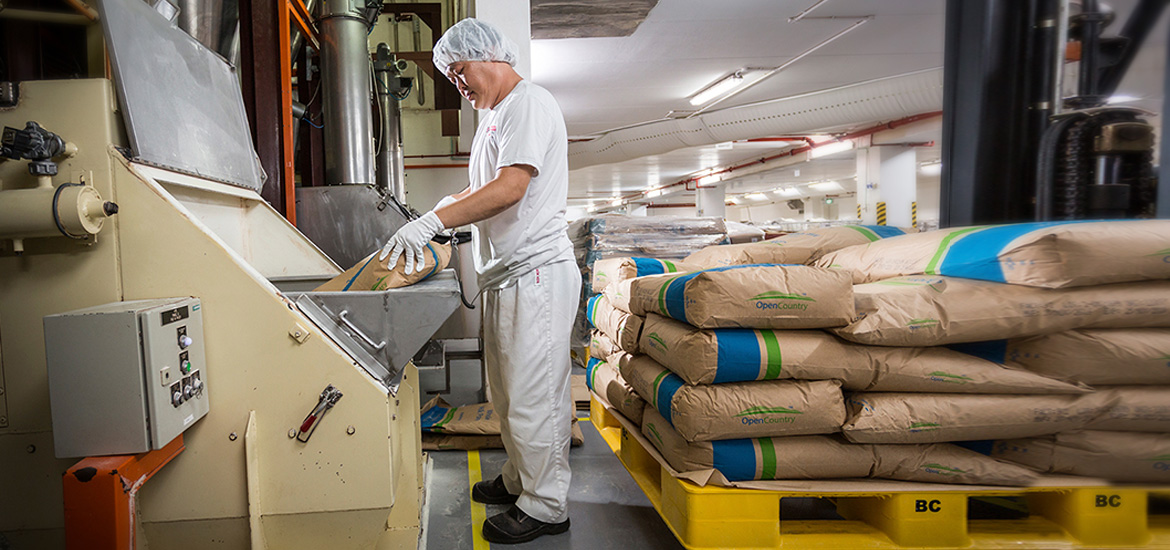Find out how you can set up your business in Singapore
Download the Guide to Setting Up Your Business in Singapore

For Switzerland-headquartered Barry Callebaut, a major supplier of chocolate and cocoa products, using Singapore as a control tower for its Asian supply chain has proven essential to its regional expansion.
From China to India, Asians are eating more chocolate as incomes expand and consumers develop a taste for new chocolate experiences. Anticipated to be one of the fastest-growing chocolate regions in the world, Asia Pacific is the third market for chocolate confectionery, after Europe and North America at over $15 billion in retail sales.
One company that has taken a bite out of this growth is B2B chocolate and cocoa manufacturer Barry Callebaut. Its regional footprint includes nine chocolate and cocoa factories, four Chocolate Academy centres that train chefs and students, and seven research and development facilities.
Chief Financial Officer Ben De Schryver says its growth in the region is being driven by China, India, and Southeast Asia. In fact, Barry Callebaut has seen sales volume in Asia continue to grow ahead of the overall chocolate confectionery market in the region over the last three years.
“Asia is both an excellent geographic location for processing and manufacturing, as well as a great consumption market, with demand for confectionery products expected to increase in the next few years,” he says.
Individual markets have also presented unique opportunities, which guides how the company structures its operations in Asia. Mr De Schryver explains, “Indonesia, for example, which is one of the biggest cocoa-processing markets in the world, is where our cocoa factories are structured.”
“China, which is seeing a growing demographic for gourmet, is where we have doubled down on our gourmet offerings by refreshing our portfolio and enhancing our capabilities via e-commerce,” he adds.
Using Singapore to access Asia
Having operated in Asia for over 20 years, Barry Callebaut first established its presence when it opened a factory in Singapore – now its largest in the region. The Singapore factory is now joined by factories in China, Japan, India, Indonesia, and Malaysia.
To meet the growing demand in the region, the largest manufacturer of industrial chocolate and cocoa products in Asia also expanded its Singapore factory in 2020, adding a fourth production line. The line features cutting-edge equipment which can produce chocolate blocks of different volumes, all at a high-efficiency rate.
From just one factory in Singapore, the company has now made the Southeast Asian nation the home of its regional headquarters, with more than 100 employees across sales, finance, supply chain management and other corporate functions.
“Singapore’s excellent geographic location as a gateway to Asia, coupled with its manufacturing prowess, reputation for ease of business and its potential as a pivotal hub location made it an ideal entry choice,”
Ben De Schryver
Chief Financial Officer
Barry Callebaut

Download the Guide to Setting Up Your Business in Singapore
Driving a centralised supply chain model from Asia, for Asia
It also operates a centralised supply chain model from Singapore for Asia, with the office assuming the role as the region’s ‘control tower’. By driving regional supply chain functions out of here, the company is able to leverage Singapore’s status as a major export hub, which comes with advantages such as competitive raw material pricing.
Having its regional supply chain leadership sitting alongside regional corporate functions has also enabled the company to reap benefits such as greater knowledge sharing. For instance, its regional supply chain executives can gain visibility into allied functions such as sales and see how products are moving, thereby passing on useful feedback to local operations teams.
More significantly, Singapore’s location at the heart of Asia allows Barry Callebaut to be well-positioned to harness the benefits of establishing supply chain operations in the region.
“Asia boasts several competitive advantages in quality, cost and efficiency, making it a strong choice to drive supply chain operations from here,” Mr De Schryver says.
The centralised supply chain model, adds consulting firm Accenture, allows for optimised operations.
Ms Alison Kennedy, Managing Director, Accenture Strategy, ASEAN says: “The ‘control tower’ approach lets companies build an integrated framework to support decision-making and improve overall supply chain performance as it allows for more opportunities to optimise through synergies."
“To that extent, MNCs have set up their global and regional supply chain hubs in Singapore in recent years to tap on the country’s logistics capabilities and connectivity to the region.”
Taking advantage of a complete ecosystem
To Barry Callebaut, another benefit of operating a centralised supply chain from Singapore is its ecosystem of diverse regional logistics players.
“Given that regional logistics players, from warehouse owners to shipping companies, are also based out of Singapore, we are able to successfully sort out back-end functions with various supply chain vendors on a regional level to ensure they cascade down efficiently at a local level,”
Ben De Schryver
Chief Financial Officer
Barry Callebaut
Barry Callebaut has also been able to successfully translate lessons in innovation from a regional to a local level, thanks to its centralised approach, he adds. For example, the company trains and upskills process engineers at the regional level and empowers them to transfer skills to the local site engineers they work with. This way, standards are set at a regional level and implemented successfully locally.
Indeed, Ms Kennedy observes that the role of supply chain ‘control towers’ has “evolved from coordination to innovation and experimentation”. This is enabled by extensive use of digital technology in areas such as demand analytics, cloud-based logistics platforms and planning automation.
This digitisation of supply chains can help companies to more accurately predict demand and adjust procurement, production and distribution schedules accordingly, among other benefits.
For manufacturers such as Barry Callebaut, the importance of being able to sense regional demand and respond swiftly will be crucial to tapping Asia’s economic potential.
As Mr De Schryver says: “While all of the Asia region presents a remarkable growth opportunity, we believe honing in on a specific market, understanding demand patterns, infrastructural prowess and local market environment are key to building a tailored and competitive business strategy that promises returns.”